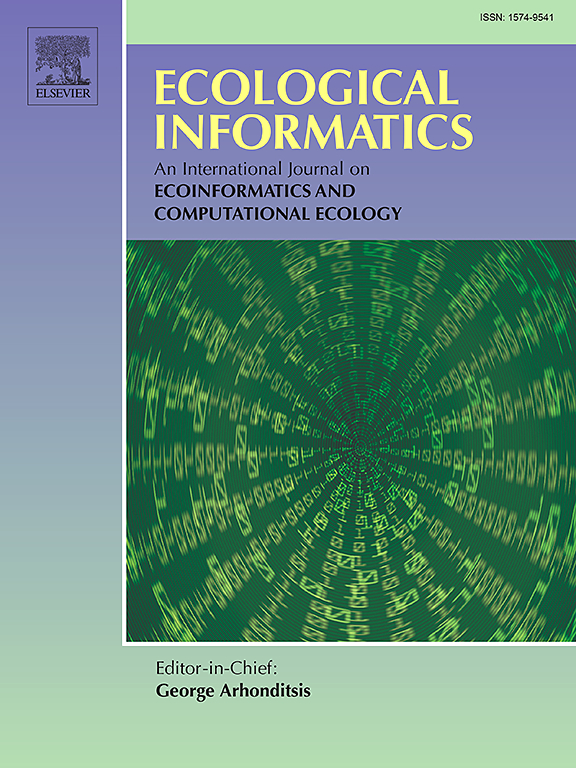Parallelization of forest landscape model to improve computational efficiency and simulation realism
IF 7.3
2区 环境科学与生态学
Q1 ECOLOGY
引用次数: 0
Abstract
Forest landscape models (FLMs) are computationally intensive because of complex spatial interactions simulated. The current FLMs use sequential processing that simulates from the upper left pixel of the landscape to the lower right pixel. Sequential processing has series shortcomings among which simulation time and realism are the bottlenecks. In this study, we present a parallel processing design embedded in the LANDIS forest landscape model. Specifically, we apply a spatial domain decomposition approach that assigns pixel subsets to individual cores, enabling parallel execution of species- and stand-level processes on each core, while dynamically reallocating subsets across cores to execute landscape-level processes, i.e., seed dispersal. We compare the simulation results between parallel and sequential processing to evaluate the effectiveness and performance of the new design. Our result showed that when the number of pixels reaches millions parallel processing will save about 32.0–64.6 % of the time than sequential processing, for a 200-year simulation at 10-year time step. When the simulation time step is 1 year for a 200-year simulation, parallel processing can save 64.6–76.2 % of the time compared with sequential processing. Parallel processing improves simulation realism because it simulates multiple blocks simultaneously and performs multiple tasks, which is closer to the reality of species-level, stand-level, and seed dispersal processes. This study highlights the potential of parallel processing in improving the computational efficiency and simulation realism of FLMs.
森林景观模型并行化,提高计算效率和仿真真实感
森林景观模型由于模拟的空间相互作用复杂,计算量大。当前的flm使用顺序处理,从左上角的像素模拟到右下角的像素。序列处理具有一系列的缺点,其中仿真时间和真实感是瓶颈。在这项研究中,我们提出了一个嵌入在LANDIS森林景观模型中的并行处理设计。具体来说,我们应用了一种空间域分解方法,将像素子集分配给单个核心,使每个核心能够并行执行物种和林分水平的过程,同时动态地重新分配跨核心的子集来执行景观水平的过程,即种子传播。我们比较了并行处理和顺序处理的仿真结果,以评估新设计的有效性和性能。我们的结果表明,当像素数达到百万时,并行处理将比顺序处理节省大约32.0 - 64.6%的时间,对于一个200年的模拟,在10年的时间步长。对于一个200年的仿真,当仿真时间步长为1年时,并行处理可以比顺序处理节省64.6 - 76.2%的时间。并行处理提高了模拟的真实感,因为它同时模拟多个块并执行多个任务,更接近于物种水平、林分水平和种子传播过程的现实性。本研究强调了并行处理在提高FLMs的计算效率和仿真真实感方面的潜力。
本文章由计算机程序翻译,如有差异,请以英文原文为准。
求助全文
约1分钟内获得全文
求助全文
来源期刊

Ecological Informatics
环境科学-生态学
CiteScore
8.30
自引率
11.80%
发文量
346
审稿时长
46 days
期刊介绍:
The journal Ecological Informatics is devoted to the publication of high quality, peer-reviewed articles on all aspects of computational ecology, data science and biogeography. The scope of the journal takes into account the data-intensive nature of ecology, the growing capacity of information technology to access, harness and leverage complex data as well as the critical need for informing sustainable management in view of global environmental and climate change.
The nature of the journal is interdisciplinary at the crossover between ecology and informatics. It focuses on novel concepts and techniques for image- and genome-based monitoring and interpretation, sensor- and multimedia-based data acquisition, internet-based data archiving and sharing, data assimilation, modelling and prediction of ecological data.
 求助内容:
求助内容: 应助结果提醒方式:
应助结果提醒方式:


